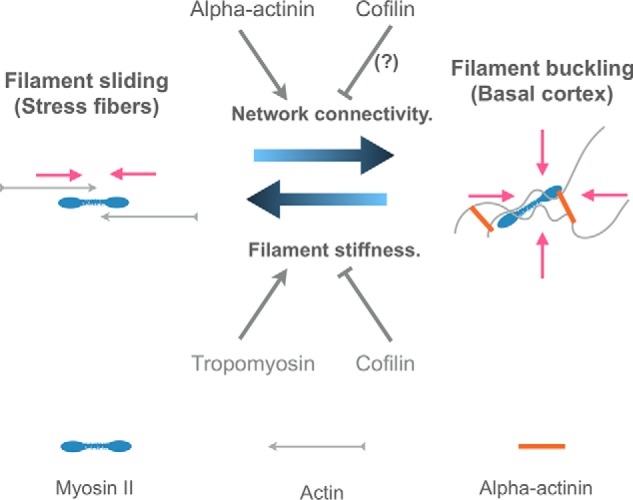Figure 9.

Model depicting one way in which α-actinin-4 might suppress stress fiber formation. In the presence of α-actinin, a highly interconnected network of disordered actin filaments forms at the basal surface of cells that undergoes biaxial contraction through filament buckling. In the absence of α-actinin, network connectivity is lost, favoring stress fiber formation. Loss of α-actinin also allows tropomyosin to bind to F-actin, which stiffens the filaments to further inhibit buckling and favor stress fibers. Pink arrows show the directions of contractile forces. See under “Discussion” for further details.
